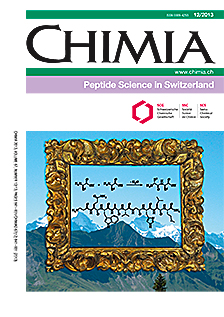Self-assembled Structures from Amphiphilic Peptides
DOI:
https://doi.org/10.2533/chimia.2013.881Keywords:
Amphiphilic peptides, Biomaterial, Bionanotechnology, Gene delivery, Self-assemblyAbstract
Nanotechnology and its applications are strongly influenced by structures self-assembled from a variety of different materials. This review covers nanostructures, including micelles, rod-like micelles, fibers and peptide beads, self-assembled from de novo designed amphiphilic peptides. The latter are promising candidates for the development of nanoscale carrier systems because they are completely composed of amino acids. In addition to designing primary sequences, secondary structure and external parameters are also discussed with respect to their impact on self-assembly. Moreover, the assembly process itself is examined. Potential applications range from gene and drug delivery devices to diagnostics, thereby highlighting the versatility of the system.Downloads
Published
2013-12-18
Issue
Section
Scientific Articles
License
Copyright (c) 2013 Swiss Chemical Society

This work is licensed under a Creative Commons Attribution-NonCommercial 4.0 International License.
How to Cite
[1]
S. J. Sigg, T. B. Schuster, W. P. Meier, Chimia 2013, 67, 881, DOI: 10.2533/chimia.2013.881.







